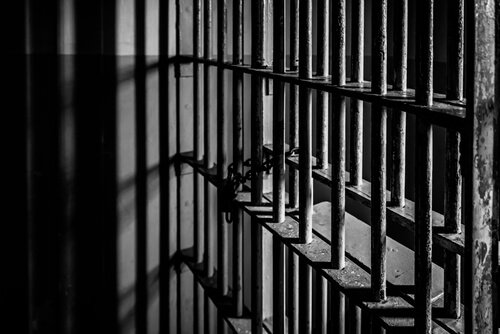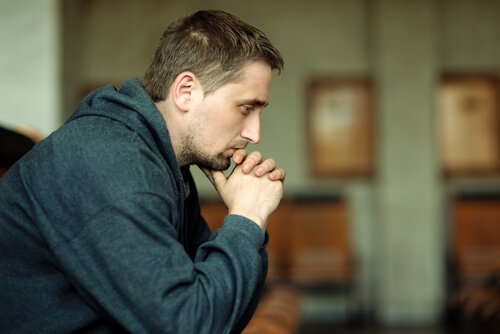Prisoner Rehabilitation: Truth or Myth?

Article 25.2 of the Spanish Constitution touches on prisoner rehabilitation and that the penalties imposed for committing a crime must keep it in mind. It’ll start in prison and must end outside of it. We can’t forget that resocialization implies the inmate’s adaptation to the outside world.
Spain has a low crime rate. However, the main motivation of the current criminal laws is social and media pressure, which has increased the length of sentences in this country. Now, over time, it’s been demonstrated that longer sentences don’t reduce the crime rate. So why do we continue to demand more jail time?
How Do Prisons Work?
In general terms, it’s important to bear in mind that when an inmate enters a prison, they first go to an adaptation module. In it, the board will evaluate them to later place them into the degree that best suits their needs. They normally assign them to an ordinary degree (the second one).
This prior evaluation serves to determine the appropriate penitentiary system for each innate, keeping the various risk factors in mind that may have made them commit the crime.
Many prisons have a swimming pool, gym, recreation room, and library, among other things. Now, none of this supposes a privilege for the inmates, as they can’t enjoy them at any minute of any day.
They’ll only get to enjoy these privileges if they pass an evaluation. These spaces are used as a means to achieve these goals, or even as punishments or rewards that depict behavior suitable for living in society.

Prisoner Rehabilitation and its Objectives
Each prisoner has their own goals, which they should adapt to their own needs. They’ll be able to achieve them with the use of the different programs available in the prison.
Psychological intervention programs seek to modify prisoners’ behavior. Here are its main goals:
- Eliminating antisocial behaviors inside the prison.
- Eliminating addiction to different substances.
- Motivating prisoners to join training and educational programs.
- Helping them make daily habits such as personal hygiene, keeping their cells clean, etc.
- Coming up with appropriate solutions to the problems that arise both within the prison and outside of it.
- Helping prisoners acquire prosocial skills.
Self-supply penitentiary centers are on the rise, which give the prisoners’ jobs, such as laundry, gardening, food, construction, etc. In 2009, a study dedicated to prisoner rehabilitation revealed some interesting facts:
- Most of the prisoners work either to make money (which indicates that they may have an unstable financial situation outside the prison) or to avoid the yard (to keep their minds busy or to stay away from dangerous inmates, etc.)
- Most of the prisoners valued the usefulness of this work. For example, getting to learn something that may be useful in the future, spending time doing something productive, following a schedule, being able to organize their lives, and learn work habits.
- From a subjective point of view, many prisoners consider that work helps them improve their relationships with other prisoners.

What Actually Goes On?
We must take into account that prison treatment is voluntary. You really can’t force an inmate to carry it out, no matter how much you want to. Why? The answer is quite simple. Genuinely wanting to do it will favor their subsequent social reintegration. The penalties structured for prisoner rehabilitation will influence the prisoners’ interest, motivation, and learning ability, among other things.
Nonetheless, this fact can be marred if the board has a poor perception of the inmate. This, as a consequence, can make them limit the prisoners’ access to an exit permit (if the person isn’t part of the prison treatment). Now, this doesn’t guarantee greater efficiency. It’s just a superficial step for the tasks and activities. They’re currently seen as a necessary means to reach the objectives.
Another thing that we must bear in mind is that crime will always exist. No matter what we do, it simply can’t be eliminated. Thus, the goal is to try to reduce it to its lowest rates. That being said, prisoner rehabilitation is a part of that goal, which is why it’s so important.
Article 25.2 of the Spanish Constitution touches on prisoner rehabilitation and that the penalties imposed for committing a crime must keep it in mind. It’ll start in prison and must end outside of it. We can’t forget that resocialization implies the inmate’s adaptation to the outside world.
Spain has a low crime rate. However, the main motivation of the current criminal laws is social and media pressure, which has increased the length of sentences in this country. Now, over time, it’s been demonstrated that longer sentences don’t reduce the crime rate. So why do we continue to demand more jail time?
How Do Prisons Work?
In general terms, it’s important to bear in mind that when an inmate enters a prison, they first go to an adaptation module. In it, the board will evaluate them to later place them into the degree that best suits their needs. They normally assign them to an ordinary degree (the second one).
This prior evaluation serves to determine the appropriate penitentiary system for each innate, keeping the various risk factors in mind that may have made them commit the crime.
Many prisons have a swimming pool, gym, recreation room, and library, among other things. Now, none of this supposes a privilege for the inmates, as they can’t enjoy them at any minute of any day.
They’ll only get to enjoy these privileges if they pass an evaluation. These spaces are used as a means to achieve these goals, or even as punishments or rewards that depict behavior suitable for living in society.

Prisoner Rehabilitation and its Objectives
Each prisoner has their own goals, which they should adapt to their own needs. They’ll be able to achieve them with the use of the different programs available in the prison.
Psychological intervention programs seek to modify prisoners’ behavior. Here are its main goals:
- Eliminating antisocial behaviors inside the prison.
- Eliminating addiction to different substances.
- Motivating prisoners to join training and educational programs.
- Helping them make daily habits such as personal hygiene, keeping their cells clean, etc.
- Coming up with appropriate solutions to the problems that arise both within the prison and outside of it.
- Helping prisoners acquire prosocial skills.
Self-supply penitentiary centers are on the rise, which give the prisoners’ jobs, such as laundry, gardening, food, construction, etc. In 2009, a study dedicated to prisoner rehabilitation revealed some interesting facts:
- Most of the prisoners work either to make money (which indicates that they may have an unstable financial situation outside the prison) or to avoid the yard (to keep their minds busy or to stay away from dangerous inmates, etc.)
- Most of the prisoners valued the usefulness of this work. For example, getting to learn something that may be useful in the future, spending time doing something productive, following a schedule, being able to organize their lives, and learn work habits.
- From a subjective point of view, many prisoners consider that work helps them improve their relationships with other prisoners.

What Actually Goes On?
We must take into account that prison treatment is voluntary. You really can’t force an inmate to carry it out, no matter how much you want to. Why? The answer is quite simple. Genuinely wanting to do it will favor their subsequent social reintegration. The penalties structured for prisoner rehabilitation will influence the prisoners’ interest, motivation, and learning ability, among other things.
Nonetheless, this fact can be marred if the board has a poor perception of the inmate. This, as a consequence, can make them limit the prisoners’ access to an exit permit (if the person isn’t part of the prison treatment). Now, this doesn’t guarantee greater efficiency. It’s just a superficial step for the tasks and activities. They’re currently seen as a necessary means to reach the objectives.
Another thing that we must bear in mind is that crime will always exist. No matter what we do, it simply can’t be eliminated. Thus, the goal is to try to reduce it to its lowest rates. That being said, prisoner rehabilitation is a part of that goal, which is why it’s so important.
This text is provided for informational purposes only and does not replace consultation with a professional. If in doubt, consult your specialist.







